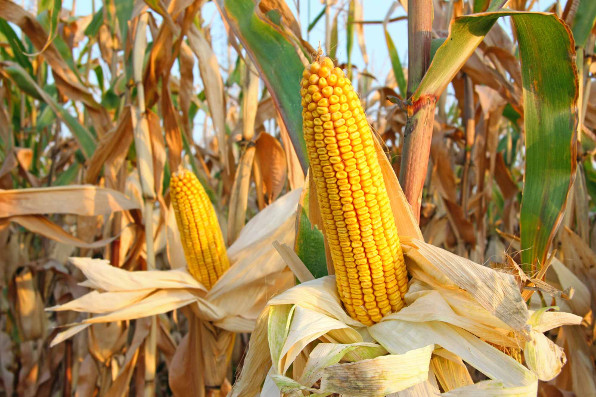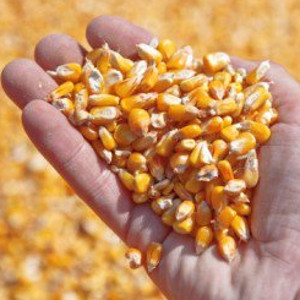I didn’t know it before, but it turns out that more Corn is grown worldwide each year than Wheat or Rice, which I thought were the leading starchy staples. Now, Aussie researchers say they’ve discovered a way to help Corn adapt and even flourish as Global Warming changes the environment…
 Yellow Field Corn, dry and ready for harvest: Perhaps our most versatile grain.
Yellow Field Corn, dry and ready for harvest: Perhaps our most versatile grain.
It makes sense when you think about it: Corn (or Maise, as much of the world calls it) not only feeds people and animals, but is a primary feedstock for the manufacture of Ethyl Alcohol, a blossoming fuel of the future. Corn Starch is a key ingredient in the manufacturing of processed foods, paper making and even cosmetics. And demand is growing quickly year over year. But what if Global Warming turns Corn’s traditional growing zones into sun-baked, empty plains, incapable of sustaining agriculture as we know it?
“There is an urgent need to deliver new higher-yielding and highly adapted crop species, before crops are affected by the expected climate change conditions. These conditions will increase the threats against global food security, and the only way to prepare for them is through international research collaborations,” says Dr. Robert Sharwood of ARC.
What they’re doing…
Researchers at the ARC Centre of Excellence for Translational Photosynthesis, led by The Australian National University (ANU) have completed a test of their theory that, by increasing Corn’s photosynthesis efficiency, they can help this vital plant survive, and even thrive, in warmer, drier climates.
“We developed a transgenic maize designed to produce more Rubisco, the main enzyme involved in photosynthesis, and the result is a plant with improved photosynthesis and hence, growth. This could potentially increase tolerance to extreme growth conditions,” said lead researcher Dr. Robert Sharwood from the ARC Centre of Excellence for Translational Photosynthesis, led by the Australian National University (ANU).
What they’ve found so far…
Corn uses a form of the enzyme Rubisco, essential to the operation of photosynthesis, which differs from that found in Wheat or Rice. As a result, Corn is more tolerant to heat and drought through better water use efficiency. Sharwood says Corn’s version of the enzyme is much more efficient than the one in Wheat and Rice already and, after enhancement to produce more Rubisco,genetically engineered Corn has produced crops with 15 percent higher yields.
What’s next?
Future research will focus on large-scale tests of the new Corn strains, getting the programme out of the lab and into the field.
“Our next step is to do field trials to see how our maize behaves in real field conditions. We have tested them in glasshouse and cabinet conditions, but now we need to go into the next phase,” says Sharwood.
My take…
As loyal readers will know by now, I am no hater of Genetically Modified Foods. I firmly believe that Genetically engineered foods are an important part of the solution to combat future food shortages, forecast to impact us by 2050.
I cheered the development, recently announced by Chinese researchers of genetically modified Rice which can be grown in Salt water, thus increasing the possible growing areas of that grain by millions of hectares / acres in China alone.
However, I also fear that ‘better’ Corn and Rice will only be useful as stepping stones – stopgaps – in the evolution our dining and overall living habits must undergo if we are to survive, much less survive in a warmer, drier future.
~ Maggie J.

